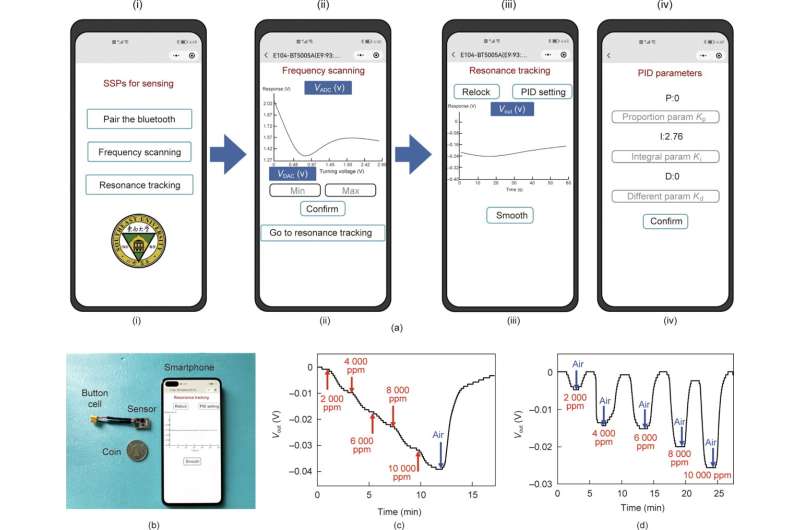This article has been reviewed according to Science X's editorial process and policies. Editors have highlighted the following attributes while ensuring the content's credibility:
fact-checked
proofread
Researchers develop ultracompact sensing system for gas detection using a smartphone

A team of researchers from Southeast University of China has developed a cutting-edge ultracompact sensing system that leverages the power of spoof surface plasmon resonance (SSPR) technology to enable adaptive and accurate gas detection using a smartphone. The research article detailing this breakthrough, titled "An Ultracompact Spoof Surface Plasmon Sensing System for Adaptive and Accurate Detection of Gas Using a Smartphone," has been published in the journal Engineering.
Traditional dielectric sensing methods often suffer from signal fluctuations, resulting in reduced sensitivity and accuracy. In response to the growing demand for precise gas detection in the Internet of Things (IoT) era, the research team has successfully engineered an ultracompact integrated sensing system that combines a spoof surface plasmon resonance sensor with signal detection, processing, and wireless communication.
The key innovation of this technology lies in its software-defined scheme, which allows for real-time tracking of resonance frequency shifts. By minimizing the hardware circuit, the system achieves adaptability to the target resonance, making it highly efficient and versatile. Additionally, the team designed a microwave spoof surface plasmon resonator to enhance sensitivity and resonance intensity, further improving the system's performance.
The integrated sensing system, constructed on a printed circuit board measuring a mere 1.8 cm × 1.2 cm, seamlessly connects to a smartphone via Bluetooth. It operates in both frequency scanning mode and resonance tracking mode, achieving an impressive signal-to-noise ratio of 69 dB in acetone vapor sensing. This breakthrough offers an ultracompact, accurate, adaptive, sensitive, and wireless solution for resonant sensors in the IoT.
The significance of this study is that the ultracompact sensing system represents a major advancement in gas detection technology. By integrating spoof surface plasmon resonance with smartphone connectivity, researchers have developed a solution that is not only highly sensitive and accurate but also adaptable to various resonant frequencies. This breakthrough has wide-ranging applications in the IoT and opens up new possibilities for smart homes and beyond.
The research article provides comprehensive insights into the system's architecture, the design and analysis of the SSPR sensor, the intelligent resonance tracking scheme, and a successful demonstration of acetone vapor sensing. The team achieved exceptional results, including a signal-to-noise ratio of 69 dB, a data rate of approximately 2,272 measuring points per second, and excellent electromagnetic compatibility performance.
The implications of this research extend far beyond gas detection. The ultracompact and intelligent nature of the proposed sensing system paves the way for its use in various resonant sensors, including those based on mechanical and acoustic principles. The team envisions applications in smart homes and the IoT, where the compactness and accuracy of the system will drive innovation and improve quality of life.
This groundbreaking research marks a significant milestone in the field of gas detection and resonant sensor technology. The team's innovative approach, combining ultracompact design, adaptive detection, and wireless integration with smartphones, promises to revolutionize the future of gas sensing in the IoT era.
More information: Xuanru Zhang et al, An Ultracompact Spoof Surface Plasmon Sensing System for Adaptive and Accurate Detection of Gas Using a Smartphone, Engineering (2023). DOI: 10.1016/j.eng.2023.05.013




















